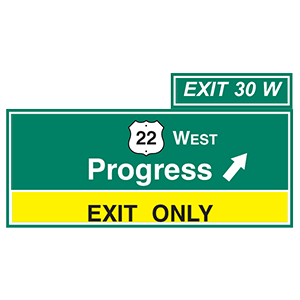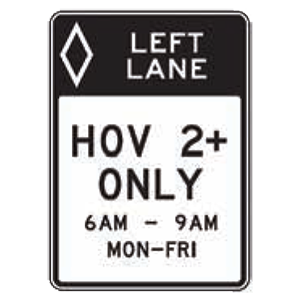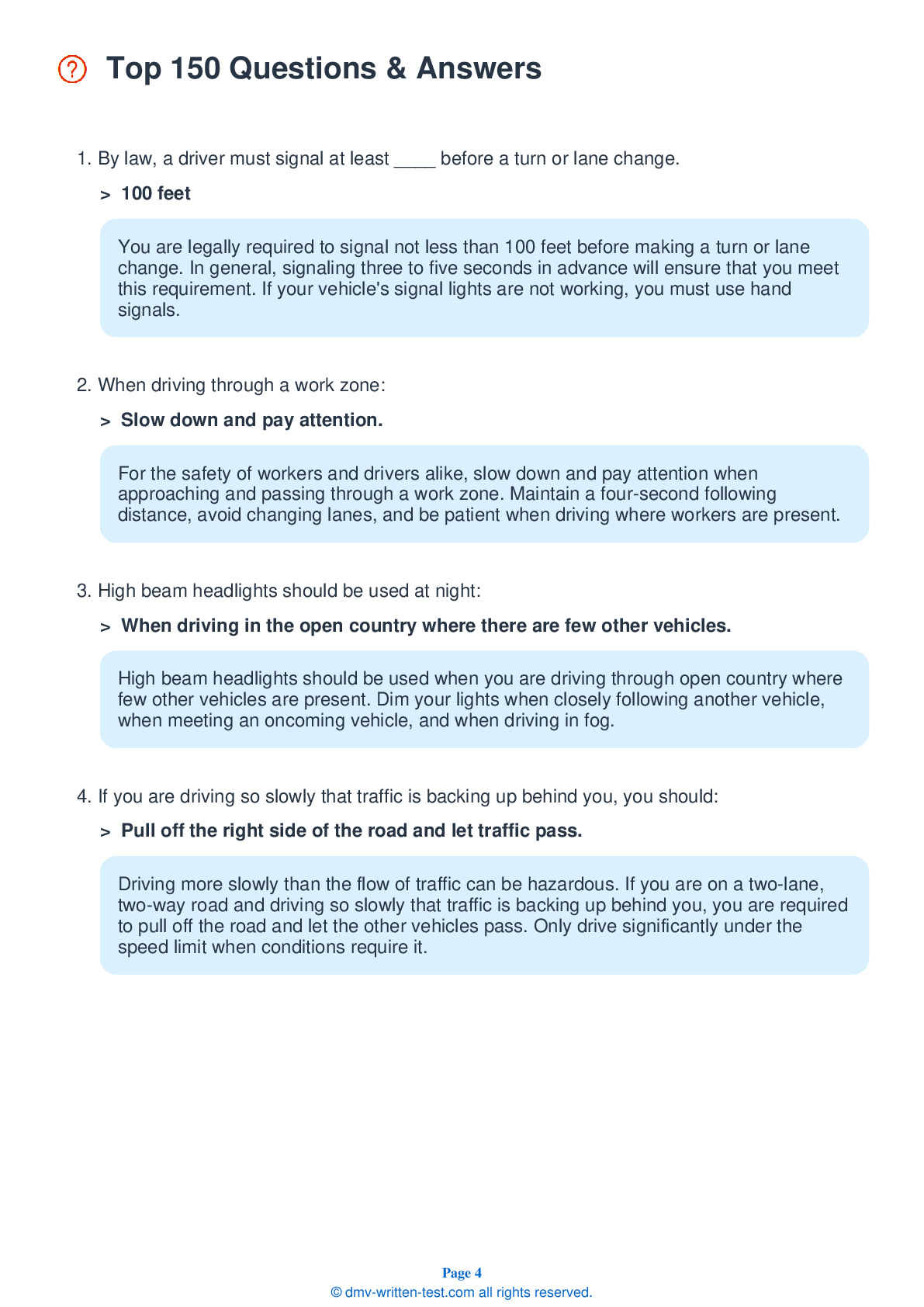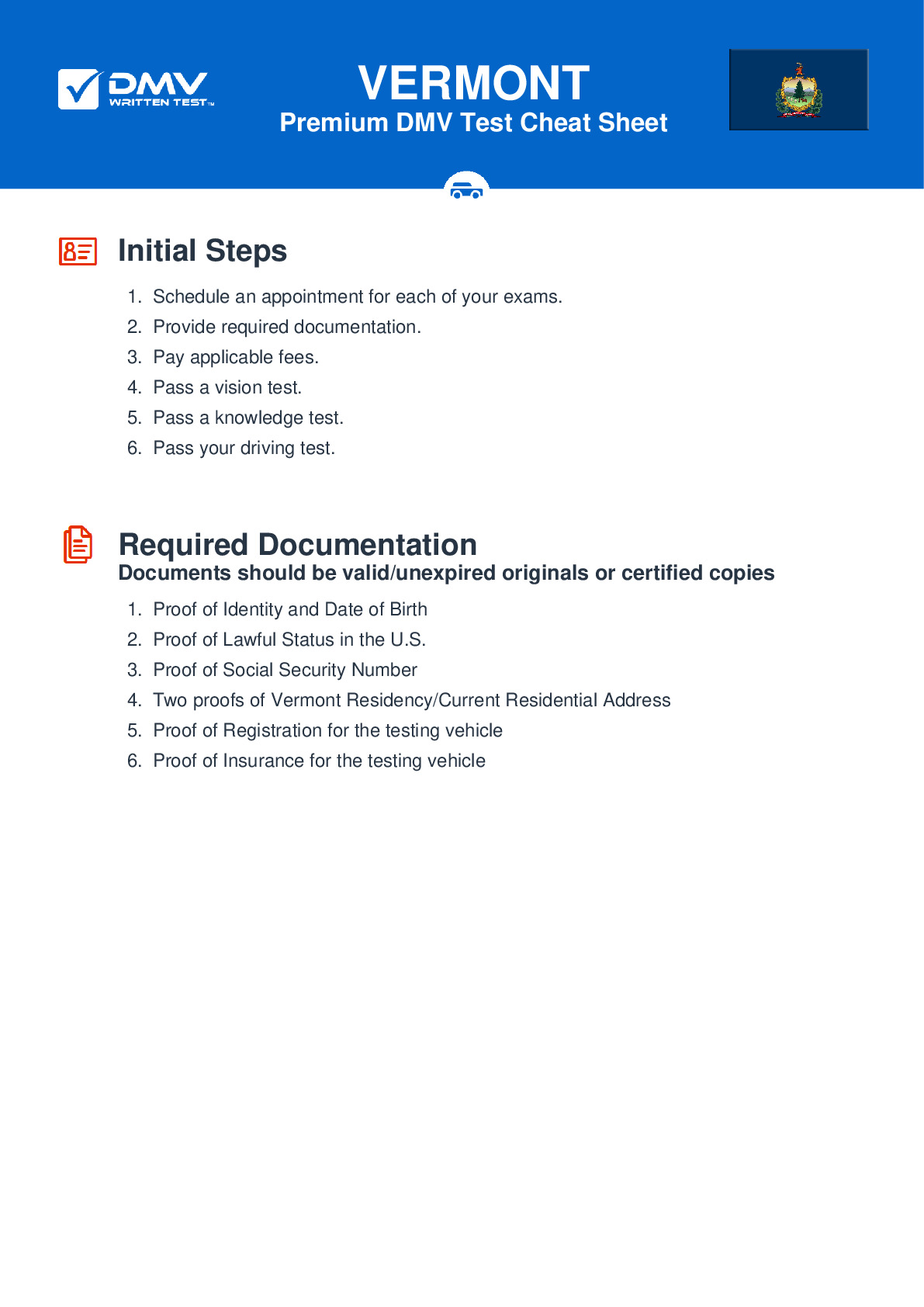2025 Vermont Permit Test 16
The following questions are from real DMV written tests. These are some of the actual permit questions you will face in Vermont. Each permit practice test question has three answer choices. Select one answer for each question and select "grade this section." You can find this button at the bottom of the drivers license quiz. For a complete list of questions and answers for Vermont please visit https://cheat-sheets.dmv-written-test.com/en/vermont/car.
Number of Tests
Number of Question
Passing Score
7. Driving while being distracted by any activity:
Explanation
Distractions cause drivers to react more slowly to traffic and hazards on the roadway. Distracted driving is never safe.
8. If you see this sign above your lane, you:

Explanation
If a yellow panel with the message "Exit only" is on a highway sign, the lane below the sign will not continue through the interchange. Instead, the lane will go off of the roadway to form a ramp. If you are in a lane directly under an "Exit only" sign, you may change lanes to move through the interchange or you must exit the highway.
9. This road sign means:

Explanation
This sign marks a high occupancy vehicle (HOV) lane. HOV lanes are reserved for use by buses and vehicles with a driver and one or more passengers, as indicated on the sign.
10. Passing is prohibited:
Explanation
Locations where it is unlawful and unsafe to pass another vehicle include hills, curves, intersections, and railroad crossings.
11. You may pass another vehicle:
Explanation
You may not pass another vehicle on a hill or in a curve because you cannot see oncoming traffic and may cause a collision. Never pass another vehicle by driving onto the shoulder of a highway. Passing another vehicle by driving over a solid yellow line is prohibited.
12. When changing lanes on a highway, you should:
Explanation
Any time you want to change lanes, you should properly signal your intentions well in advance, check your mirrors, and check your blind spot. You can check your blind spot by glancing over your shoulder in the direction that you plan to move.
13. Which of the following is true regarding seat belts and child restraints in vehicles?
Explanation




